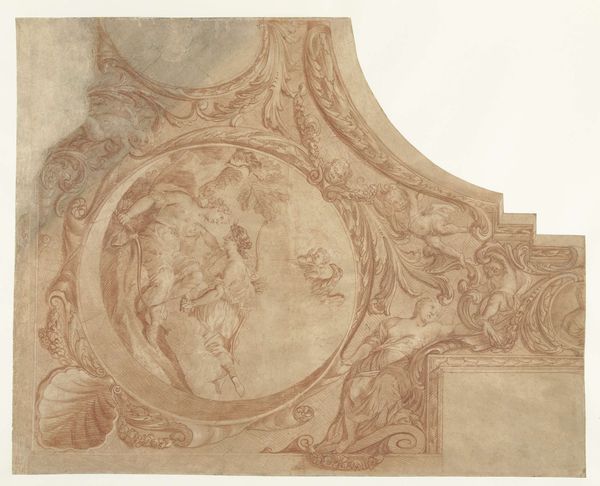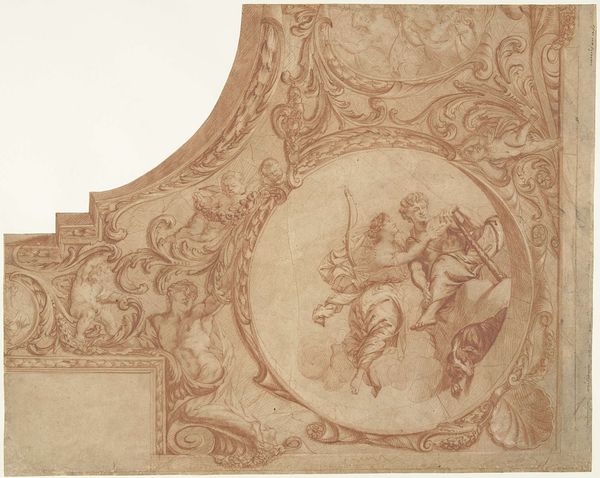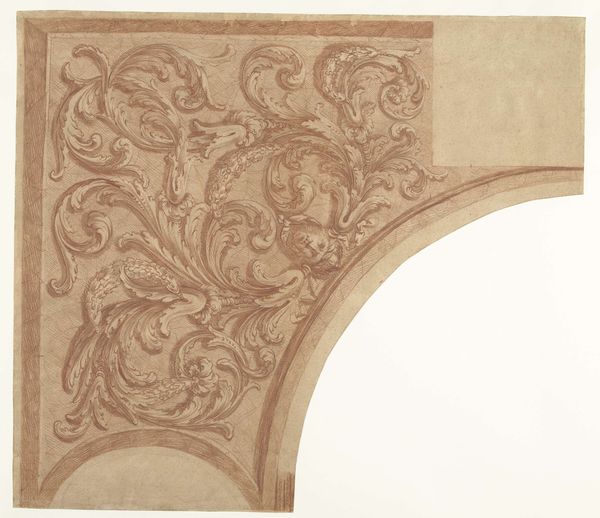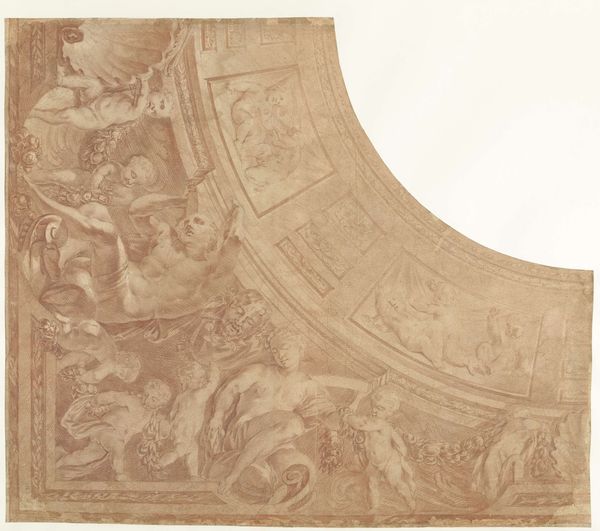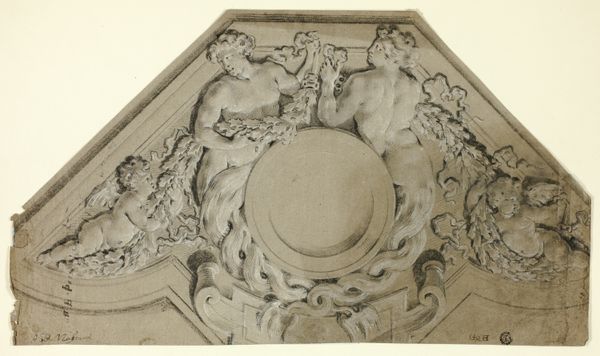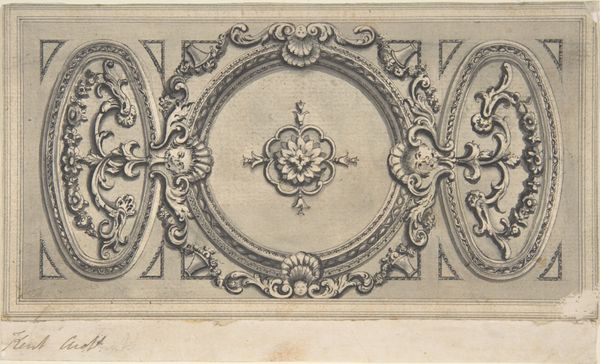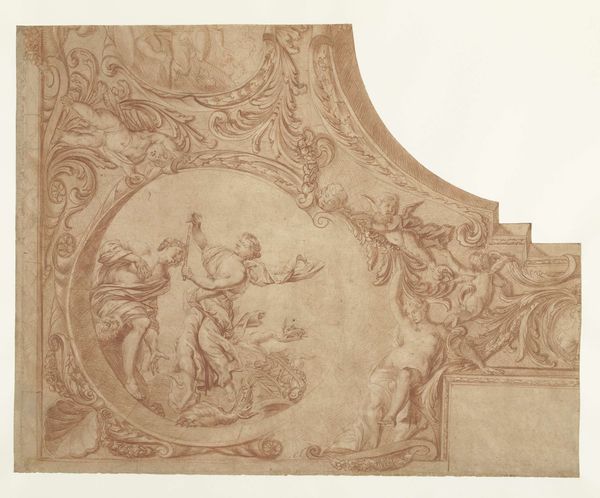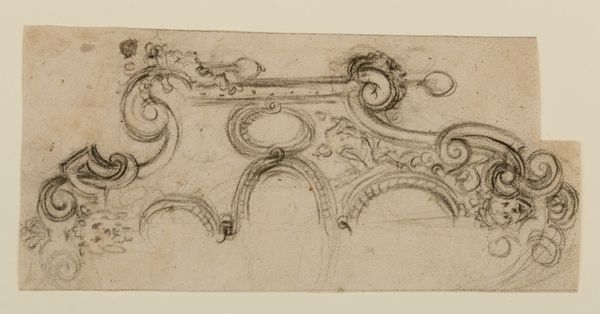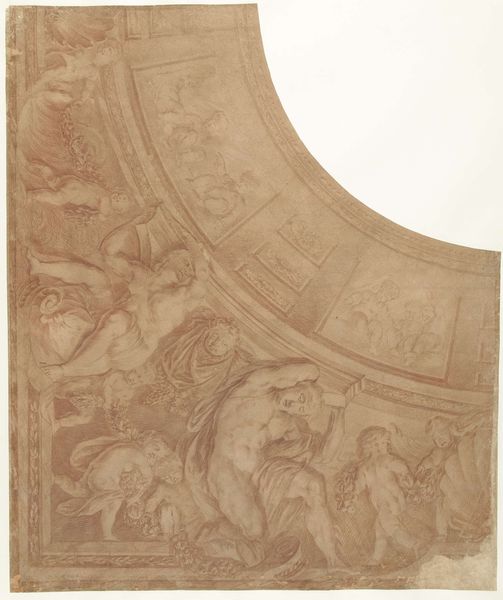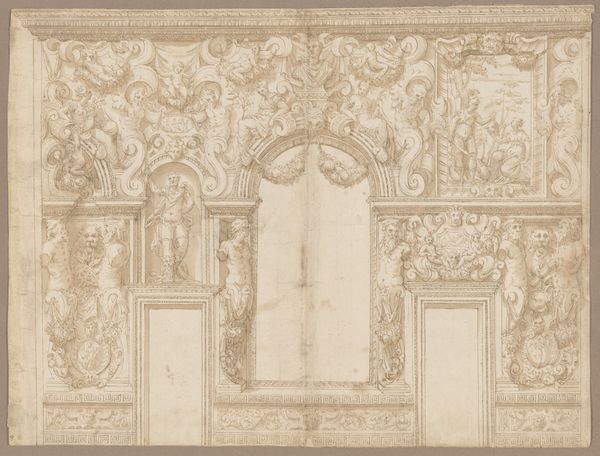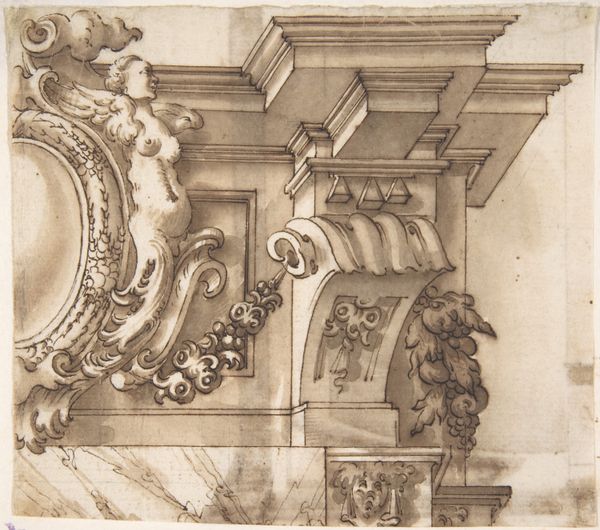
Ontwerp voor een hoekstuk van een plafond met Vertumnus en Pomona 1680 - 1757
0:00
0:00
drawing, pencil
#
pencil drawn
#
drawing
#
baroque
#
pencil sketch
#
charcoal drawing
#
figuration
#
pencil drawing
#
pencil
#
history-painting
#
academic-art
#
watercolor
Dimensions: height 566 mm, width 461 mm
Copyright: Rijks Museum: Open Domain
Curator: This delicate rendering in pencil offers a glimpse into the baroque. This is Mattheus Terwesten's, "Design for a corner piece of a ceiling with Vertumnus and Pomona," created sometime between 1680 and 1757. It's held at the Rijksmuseum. Editor: My first impression is one of lightness and asymmetry, an ephemeral narrative. The red chalk medium adds to its dreamlike quality. How would this design have functioned in its intended context? Curator: Well, Vertumnus and Pomona represent the changing seasons and abundance, embodying themes that rulers liked to project; Terwesten’s choice suggests prosperity and divine favor. Think of it as an opulent stage. What’s really interesting here is how this sketch reveals academic ideals about love, wealth, and leisure as tools to reinforce elite ideology. Editor: So, art functioning as soft power? The idealized forms, though—they seem frozen, disconnected from everyday struggles. Does this vision truly represent the lives of the people under such rule? The piece itself as almost a symbolic barrier or high gate. Curator: Indeed. The classical figures—notice Pomona's cascading drapery and Vertumnus's shepherd's staff— speak to a desire for timeless authority, reminiscent of classical myth, echoing motifs of a golden age, which has a resonance for power-brokers even today. Editor: It strikes me that a visual language that prioritizes such classical figures might serve to silence other narratives and identities. Who gets to participate in this abundance, and who is excluded? It feels crucial to address the inherent biases within these historical representations. Curator: I can certainly see how these representations project the interests of specific people who controlled visibility, like how royal families used marriage rites, masquerades, and diplomatic visits. They offer some crucial keys into understanding historical and cultural memory. Editor: True. Analyzing these choices is important because visual representations create what's acceptable in any age. These archetypes have served as cultural currency even into today. Thank you. I feel this conversation made the dynamics more relevant.
Comments
No comments
Be the first to comment and join the conversation on the ultimate creative platform.
